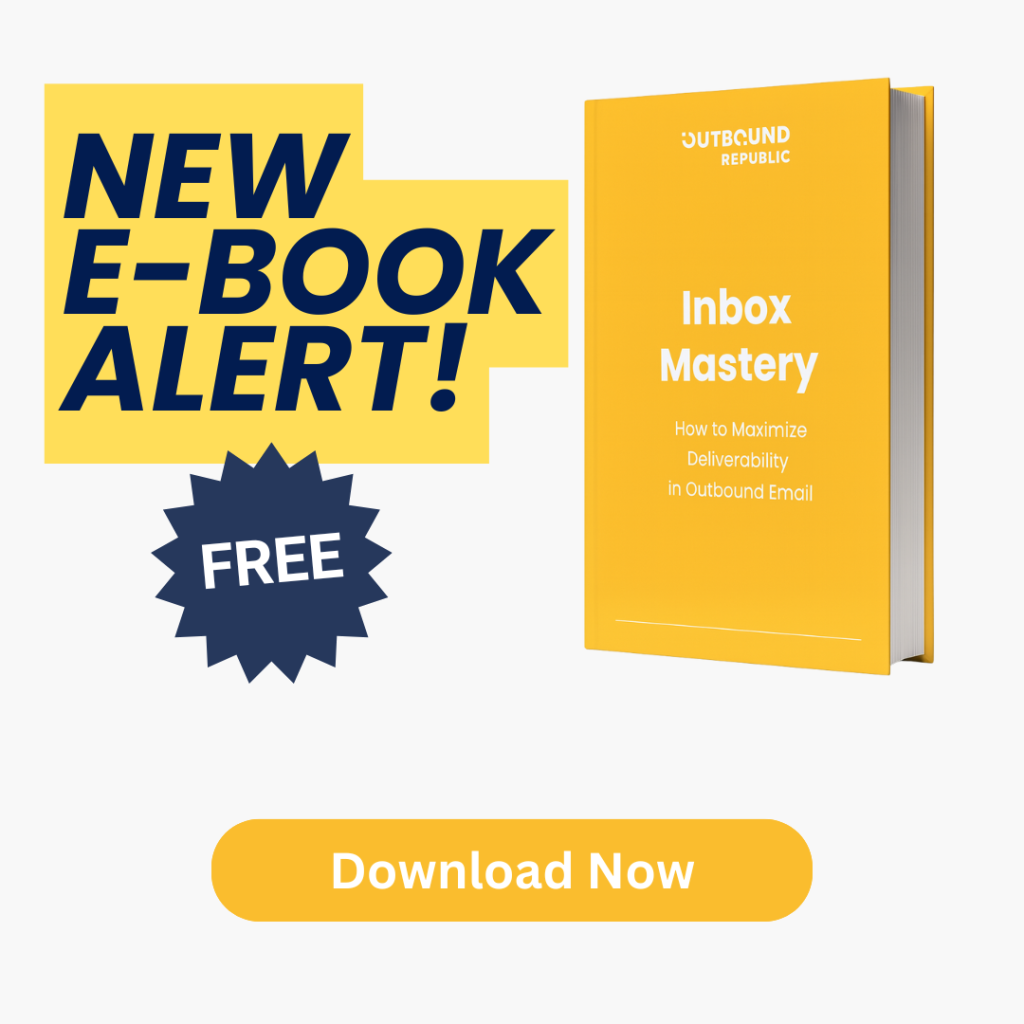Most salespeople think cold outreach is a numbers game – send enough emails, and someone will bite.
But if that’s all it took, your inbox would be full of random messages you want to answer.
The truth is, cold outreach isn’t about sending more. It’s about understanding why people respond at all.
At its core, cold outreach is a psychological exercise. One that plays on human behavior, trust, curiosity, and emotion. The best outbound reps don’t just write messages; they design experiences that make people want to engage.
Let’s break down the psychology behind what makes people click, open, and reply and how to use it ethically and effectively in your outbound strategy.
1. Reciprocity: Give Before You Ask
One of the strongest principles in psychology, identified by Dr. Robert Cialdini in Influence: The Psychology of Persuasion, is reciprocity – the human tendency to return a favor.
In outbound, that means offering value first.
Instead of opening with a pitch, lead with something genuinely useful – a relevant insight, resource, or observation.
| Example: “Noticed your team is hiring SDRs – here’s a short report on what fast-scaling teams are doing to shorten ramp time.” |
It’s small, but it shifts the tone. You’re no longer interrupting. You’re contributing.
And once you’ve given something of value, your prospect feels a subtle psychological pull to reciprocate. Often by replying.
2. Social Proof: People Trust People Like Them
Social proof is the psychological bias that makes us more likely to take action when we see others – especially peers – doing the same.
In cold outreach, this means referencing relevant examples or shared experiences:
| Example: “We recently helped [similar company] increase reply rates by 30% using a strategy tailored to their ICP.” |
Research from Nielsen shows that 92% of people trust recommendations from peers over any form of advertising.
Your prospects don’t know you yet. But if they see that others like them have worked with you and gotten results. It reduces risk and increases curiosity.
3. Curiosity: The Brain’s Reward System in Action
Humans are wired for curiosity. When presented with an incomplete story or open loop, our brains release dopamine pushing us to seek resolution.
In email terms, that means crafting subject lines or opening sentences that spark just enough intrigue without sounding manipulative.
| Examples: “You’re probably not hiring right now, but I noticed something interesting…” “Quick idea that helped [competitor] fix this exact problem.” |
According to a study published in Neuron, curiosity enhances learning and engagement because it activates the brain’s reward system.
If your outreach triggers curiosity, you’re no longer fighting for attention – you’re creating anticipation.
4. Relevance: The Shortcut to Trust
People reply when something feels personally relevant.
The fastest way to get ignored? Sending a message that could have gone to anyone.
Personalization isn’t just about using someone’s name – it’s about showing you understand their context.
| Example: “Saw your recent post on scaling outbound – how are you balancing SDR efficiency with personalization?” |
Relevance signals respect. It shows you’ve done your homework.
According to a Salesforce study, 76% of B2B buyers expect more personalized attention from sellers, especially early in the engagement process.
When people feel seen, they’re more likely to respond – even if it’s just to say “not right now.”
5. Timing and Cognitive Load: Why ‘When’ Matters
Even the best message fails if it lands at the wrong time.
Cognitive psychology tells us that people are most responsive when their mental load is light – typically early in the day or just after lunch, when inboxes are less chaotic.
According to Yesware’s email engagement study, emails sent between 9–11 AM and 1–3 PM have the highest reply rates.
Combine that with buying signals (e.g., hiring trends, funding, product launches), and you’ve got the perfect window to reach someone when they’re both receptive and relevant.
6. Emotion: Logic Makes You Think, Emotion Makes You Act
Even in B2B, decisions are driven by emotion, specifically fear, curiosity, and ambition.
Emotionally intelligent outreach connects to these triggers.
| Example: Fear → “You might be losing X opportunities each month because…” Curiosity → “We found something surprising about how top SaaS teams do this.” Ambition → “Here’s how [peer company] scaled pipeline 3× without extra headcount.” |
According to Harvard Business School research, emotions account for up to 95% of decision-making.
The trick is to use emotion responsibly, not manipulation, but motivation.
7. The Reply Psychology Framework
Here’s how the most effective outbound teams apply all these psychological levers together:
| Psychological Principle | How to Apply It in Outreach |
|---|---|
| Reciprocity | Lead with a useful insight or resource. |
| Social Proof | Reference relevant peers or case studies. |
| Curiosity | Use open loops in subject lines and hooks. |
| Relevance | Tie your message to something specific about the prospect. |
| Emotion | Frame outcomes around ambition or pain, not features. |
| Timing | Align outreach with engagement windows and buying signals. |
Outbound isn’t a guessing game. It’s behavioral science in motion.
The tools have changed. From cold calls to AI-driven outreach. But the psychology of connection hasn’t.
People reply when they feel seen, intrigued, and respected.
So before you hit “send,” ask yourself:
Does this message make someone want to respond. Not because they have to, but because it feels worth their time?
That’s the difference between noise and connection.
And it’s what separates good outbound from great outbound.





